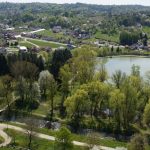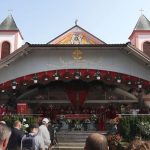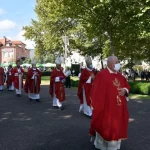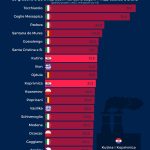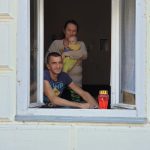November 2, 2019 – More than a million religious tourists visit Medjugorje every year, even though the Vatican has not authenticated anything there, but few know about the only Vatican-authenticated miracle in Croatia which can be visited. Meet the Eucharistic Miracle in Ludbreg.
My first visit to Croatia in what was then Yugoslavia was back in 1988. I remember overnighting in Zagreb before heading to the destination which was the main purpose of the trip.
Medjugorje.
As I was the product of nine years of Jesuit education in a British boarding school, the Catholic faith was never far away. Indeed, so strong was the influence that I went to voluntary mass six times a week at 07:20 before lessons began, and I even contemplated becoming a priest at one stage. And so when I learned of the alleged apparitions in Medjugorje, I knew I had to visit this miraculous place.
But when I arrived, there was nothing concrete to see. Apart, of course, from apartments, so many apartments. This was a small village which had exploded in just eight years after six children claimed to have been visited by the Virgin Mary while tending goats. More apparitions occurred, and the Virgin Mary sends a message to one of the (now adult) visionaries on the 25th of each month. But there was nothing to see, apart from the hill where the sightings allegedly happened, and a big church in the centre of town which became the religious focal point.
The religious tourism industry – for it is an industry – has transformed Medjugorje, which now welcomes over a million religious tourists a year, the majority of whom spend a few days. Think about that for a second – one small town in Hercegovina attracts 5% of Croatia’s entire tourist arrivals each year, and it attracts them 12 months a year.
I have spent a lot of time in Medjugorje over the years. It is a place which sharply divides opinion between those who are fervent believers in the apparitions to those who are equally fervently convinced that the whole thing is an elaborate con which has become a great money-making machine for all. My opinions are not relevant, but one which is is the opinion of the Catholic church itself and the Vatican in particular. And this is where I got really surprised, especially as I read somewhere that Medjugorje is apparently the second most visited Catholic destination for religious tourism in Europe, possibly the world, I can’t remember.
And yet neither the local bishop or the Vatican itself has officially endorsed it. Indeed, the local bishop has gone on record to state the apparitions are not credible, as recently as last year.
And even without this official endorsement, still more than a million people come each year – that is a tourism miracle in itself. I have met many people who have been to Medjugorje, and there is no doubting their beliefs or that being there gives them peace.
In terms of a religious tourism destination, the numbers are incredible.
Every time I have driven away from Medjugorje over the years, I wonder what Croatian tourism would make of a fully authenticated miracle by the Vatican.
And then I found out that one exists, fully authenticated by the Vatican. In Ludbreg in Varazdin County.
The Real Presence website gives a great overview of the history of Ludbreg’s miracle.
In 1411 at Ludbreg, in the chapel of the Count Batthyany’s castle, a priest was celebrating Mass, during the consecration of the wine, the priest doubted the truth of transubstantiation, and the wine in the chalice turned into Blood. Not knowing what to do, the priest embedded this relic in the wall behind the main altar. The workman who did the job was sworn to silence. The priest also kept it secret and revealed it only at the time of his death. After the priest’s revelation, news quickly spread and people started coming on pilgrimage to Ludbreg. The Holy See later had the relic of the miracle brought to Rome, where it remained for several years. The people of Ludbreg and the surrounding area, however, continued to make pilgrimages to the castle chapel.

In the early 1500s, during the pontificate of Pope Julius II, a commission was convened in Ludbreg to investigate the facts connected with the Eucharistic miracle. Many people testified that they had received marvelous cures while praying in the relic’s presence. On April 14, 1513, Pope Leo X published a Bull permitting veneration off the holy relic which he himself had carried in procession several times through the streets of Rome. The relic was later returned to Croatia.
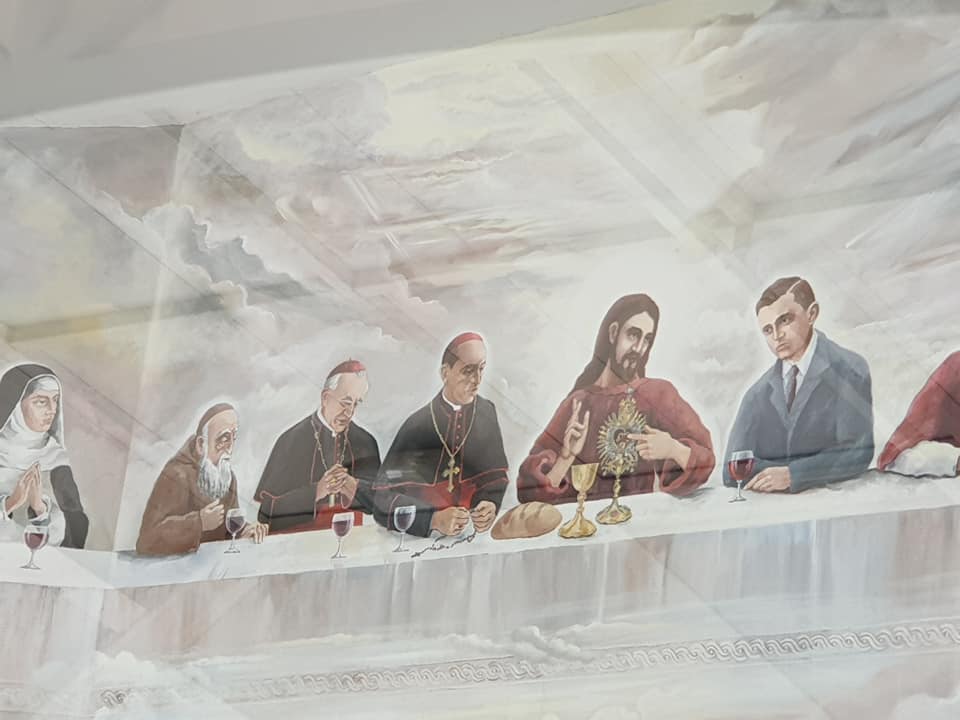
In the 18th century northern Croatia was ravaged by the plague. The people turned to God to call upon His help, and the Croatian Parliament did the same. During the session held on December 15, 1739 in the city of Varazdin, they vowed to build a chapel at Ludbreg in honor of the miracle if the plague ended. The plague was averted, but the promise vow was only fulfilled in 1994, when democracy was restored in Croatia. In 2005 in the votive chapel, the artist Marijan Jakubin painted a large fresco of the Last Supper in which Croatian saints and blesseds were drawn in place of the Apostles. St. John was replaced with Blessed Ivan Merz, who was included among the 18 most important Eucharistic saints in the Church’s history during the Synod of Bishops held in Rome in 2005. In the painting, Christ is holding in His hand a monstrance containing the relic of the Eucharistic miracle.
https://www.youtube.com/watch?v=v0SaYzrxOB0
Croatian speakers can learn more about the miracle in the video above.
And this is where things got rather extraordinary, to me at least. I have asked a LOT of Catholic friends here in recent days if they know about the Ludbreg miracle. Most only knew about Ludbreg as the centre of the world, others knew that there was some kind of pilgrimage in September, but a miracle? The only Vatican-authenticated one in all Croatia that you can actually visit? Not one person.
Amazing.
And yet people DO know about it, at least 100,000 people. For that is the number of pilgrims who gather in Ludbreg each year in the first week of September for a special commemoration of the miracle in the park in front of the church constructed in 1994. Check out some footage from this year’s pilgrimage above.
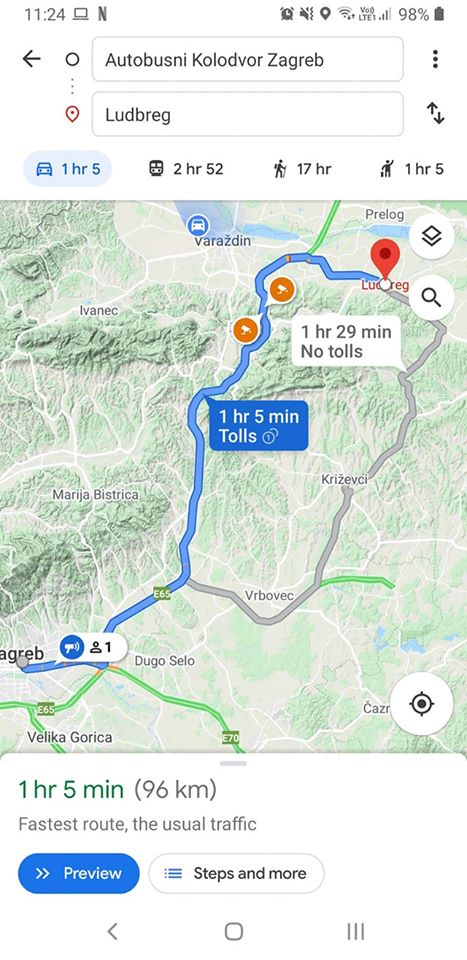
And for the rest of the year, apart from Easter, the church and the park are completely unused.
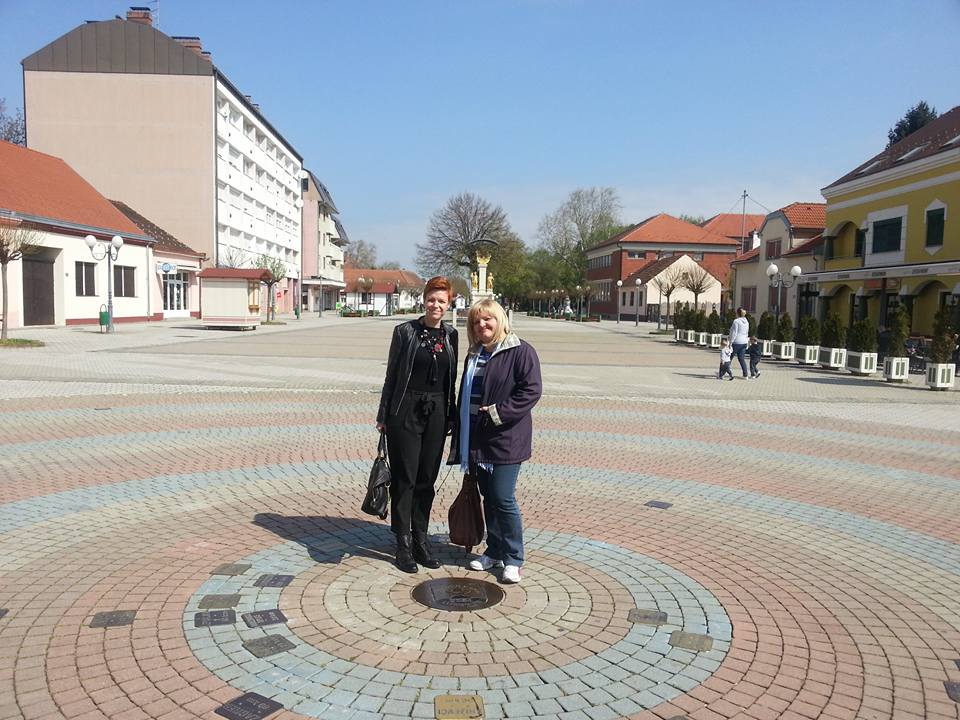
The park comes with its own Stations of the Cross.
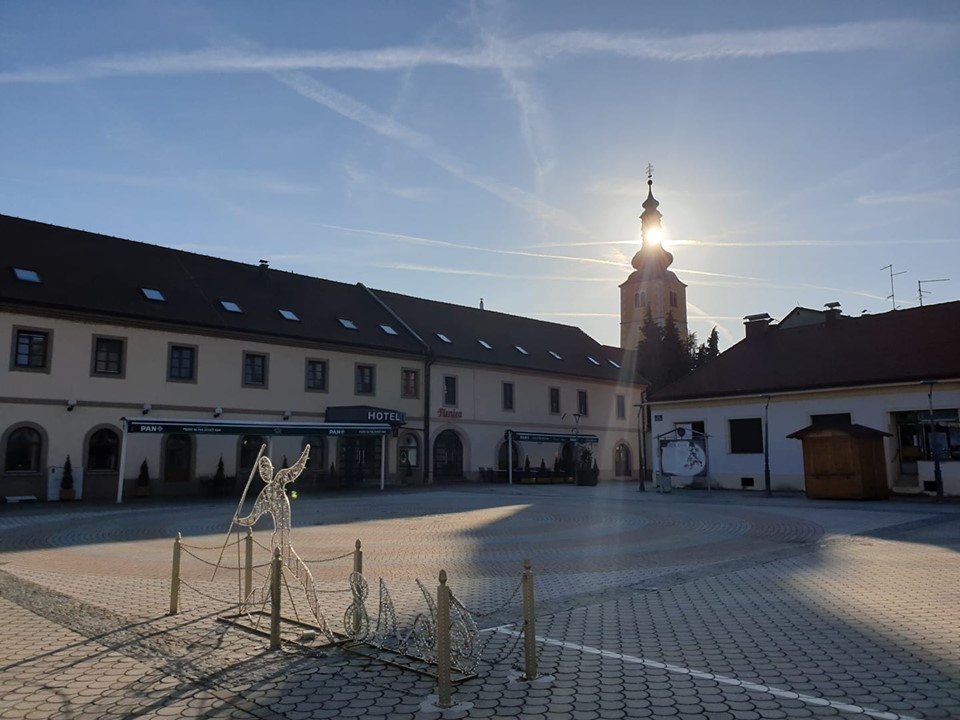
The 1994 church, however, is not where the miracle chalice is held. It is to be found in the Most Holy Trinity Church in the centre of town, just off the main square and the centre of the world.
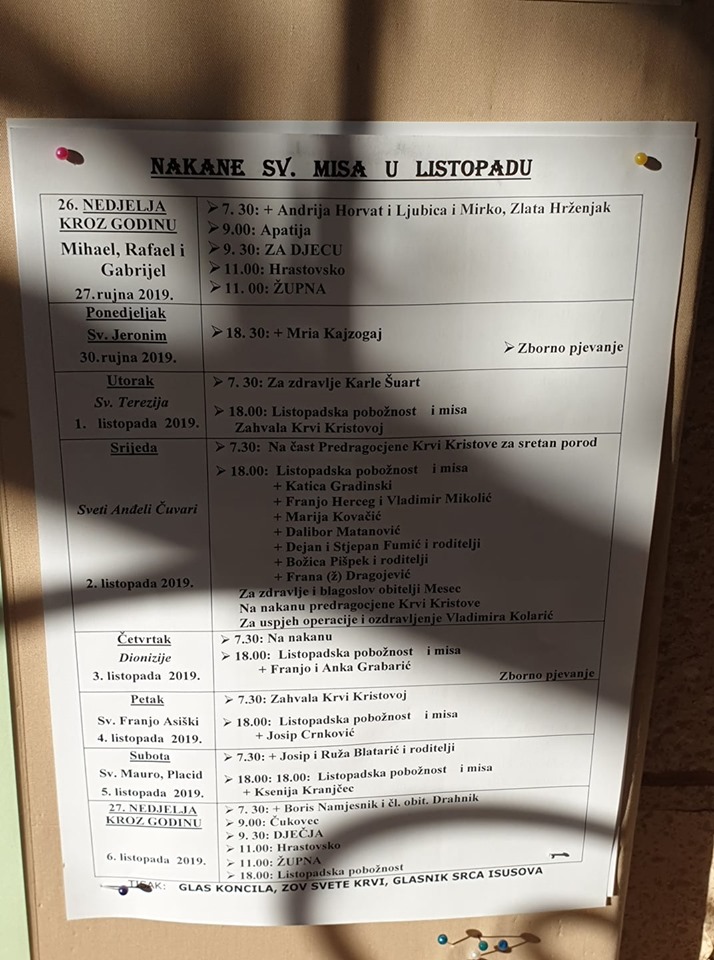
One of the challenges of seeing the miracle chalice is that the church is closed a lot of the time, but with a little careful planning it can be visited every day. For mass is held daily, the chance to worship in the presence of Croatia’s only authenticated miracle. Mass times for October above – making this information available online and in English would be easy to do.
And it turns out that this is exactly what is already happening, but on a very limited scale. Ludbreg has a steady trickle of tourists from Poland, I learned. They arrive by bus and spend the night in Ludbreg before attending mass in the morning and continuing their journey to their end destination – Medjugorje. From the town with the authenticated miracle to the town without Vatican approval but with over a million tourists a year.
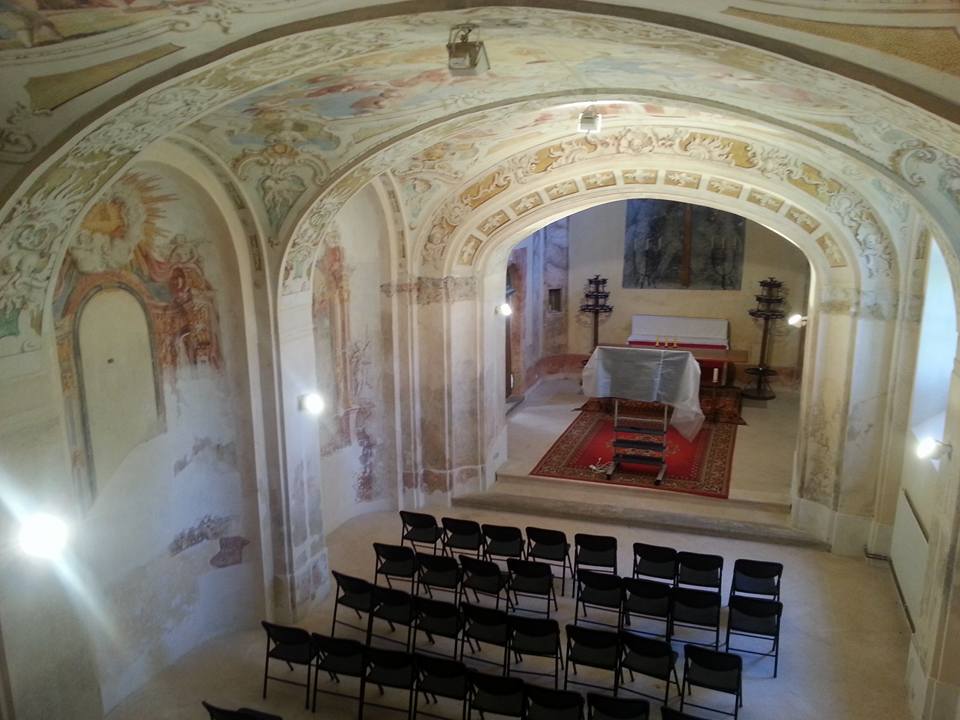
From what I learned during my last visit to Ludbreg, although the Polish pilgrims go to mass in Ludbreg, they do not visit the original chapel where the miracle took place.
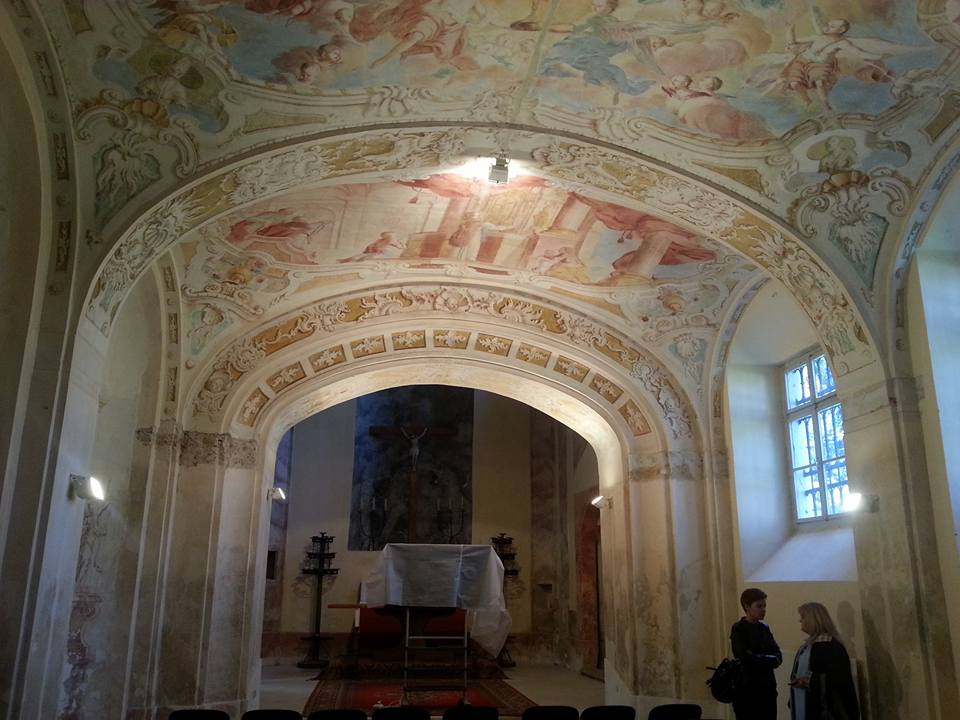
Which is a shame, as it is REALLY pretty and has some rather fascinating things to see is the small exhibition area behind it.
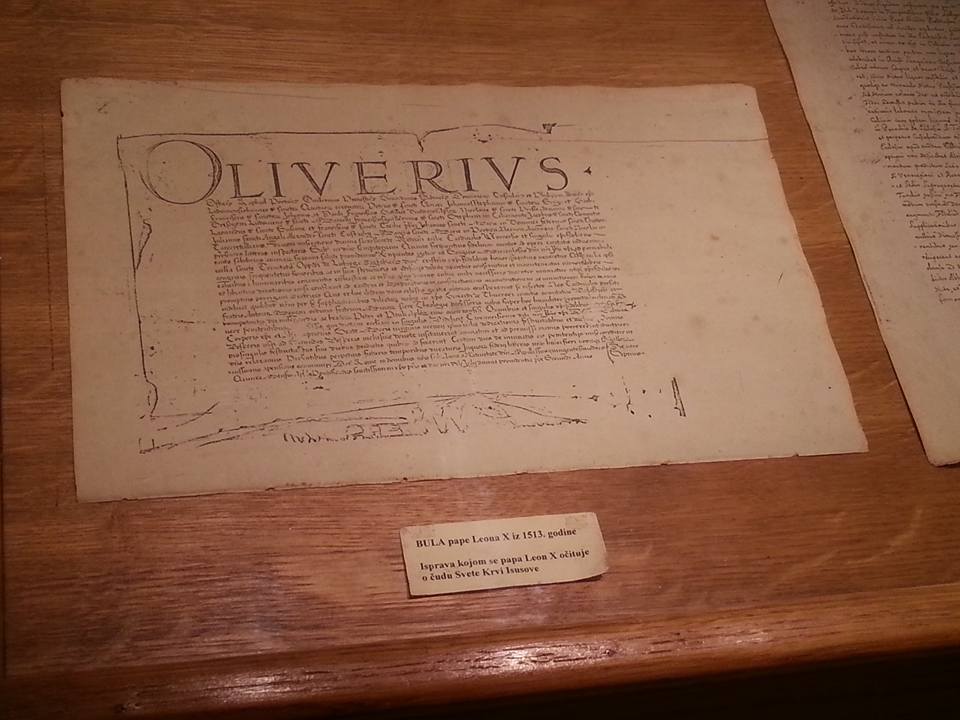
Including the papal bull of Pope Leo X in 1513.
Religious tourism is a niche product, and it is not for everyone, but as Medjugorje has proved, it motivates people to travel. And as Croatia looks to extend its season and develop tourism in continental Croatia, is it sitting once more on a hidden jewel, this time in the niche of religious tourism? If religious tourists from Poland are already coming to Ludbreg, that is proof that this incredible little story is attractive to the niche market. The fact that it is 7.5 hours from Medjugorje and not far off the bus routes of many pilgrims going to Medjugorje by bus from Central Europe surely means that there is a market with captive audience to be developed. Word of mouth passes quickly in such niche markets, and if the majority of Catholics even in Croatia know almost nothing about the Ludbreg miracle, one assumes the same is true elsewhere. But some Poles know about it and are sufficiently interested to visit with the current set up. As I understand it, they are also able to have the mass said in Polish by their accompanying priest.
Imagine if Ludbreg could expand its religious content, as well as better promotion of its authenticated miracle. While nobody is suggesting we have a new Medjugorje in terms of tourist arrivals, that current Polish trickle could turn into a very steady stream. A little thought into better use of the current religious offering in Ludbreg and better promotion is pretty much all that is required.
And the components are already there. Instead of just mass and then an onward journey that the Polish tourists currently experience, include a tour of the original chapel with its gorgeous frescoes. Visit the exhibition by the chapel and learn about the papal bull and more. Stroll over through the park to the 1994 church built in belated thanks for averting an 18th-century plague. Do the Stations of the Cross in the park, then learn more about Croatia’s saints in the unique Last Supper fresco to be found at this church. And then perhaps an early lunch – choose from Croatian, Italian, Mexican and American cuisine at the appropriately named Hotel Raj across from the park – Raj in Croatian means ‘heaven.’
Too fanciful? I personally don’t think so, especially as the Polish pilgrims have already proven the interest.
As I was driving away from Ludbreg, I thought of the possibilities of religious tourism and realised that this is a tourism niche that has been largely overlooked until now. Croatia has some INCREDIBLE religious sites (Blaca Monastery on Brac, say no more) and processions (Za Krizen on Hvar, The Assumption of Mary in Sinj), and some wondrous occurrences that are not certified as miracles (Our Lady of Trsat, the Black Madonna of Marija Bistrica). And yet there is no central exhibition centre or museum where one can learn about Croatia’s diverse and truly fascinating religious heritage. So why not build create one and give even more content to visitors. And where better than in the Croatian Miracle Town of Ludbreg – developing tourism continental Croatia and developing a year-round religious tourism niche at the same time? But that perhaps is a topic for another day.
You can follow the Ludbreg Tourist Board on Facebook.

